Discover the essential steps involved in mounting an electrical panel in a metal building, ensuring safety and efficiency.
Mounting an electrical panel in a metal building involves a series of steps that ensure safety and functionality. This article will guide you through the process from selecting the right location, preparing the surface, installing the panel, to wiring it correctly.
With careful attention to details such as grounding and adherence to electrical codes, you can successfully mount your electrical panel in a metal building.
Stay with us as we delve into the specifics, providing you with a comprehensive guide to achieve a safe and efficient electrical setup in your metal structure.
Key takeaways:
- Choose the right electrical panel based on power requirements.
- Follow safety procedures when handling electrical panels.
- Mount the electrical panel using secure fixtures and fittings.
- Connect circuits to the main panel and ensure grounding.
- Regularly maintain and test the electrical panel for optimal performance.
Choosing the Right Electrical Panel for a Metal Building
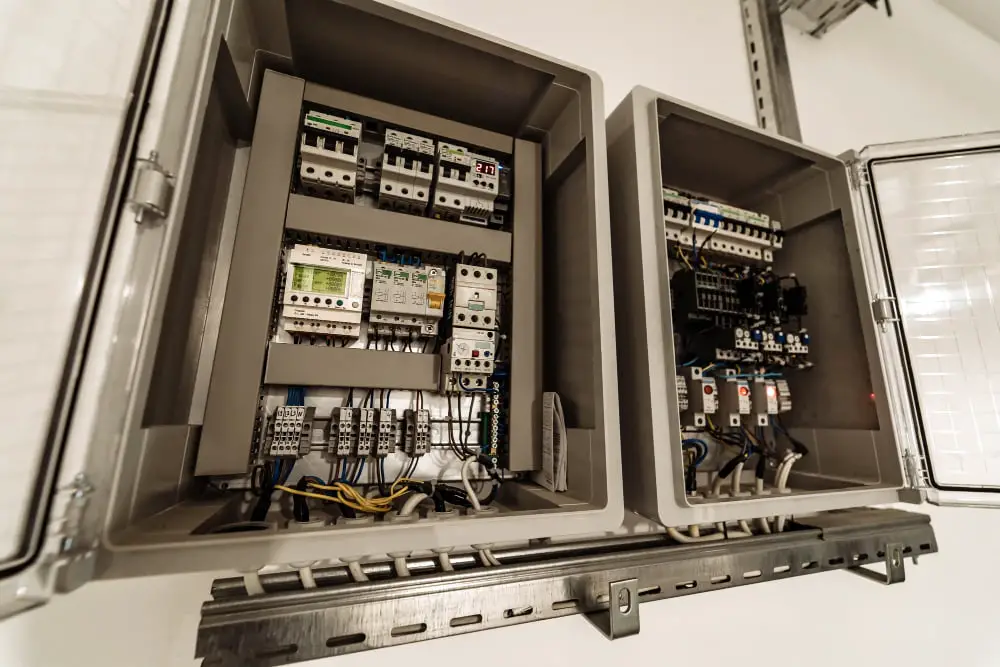
In considering the perfect panel for a metal building, assess the building’s power requirements first. A residential-type panel with a capacity of 100 to 200 amps is often appropriate for smaller structures, while larger buildings may require a heavy-duty, 3-phase panel that can handle up to 800 amps.
The panel’s rating should correspond to the total electricity load of all connected devices. Underrated panels risk damage or fires due to overload. Conversely, an overrated panel can result in unnecessary expenditure.
Furthermore, the panel’s construction should be robust, providing a solid enclosure with ingress protection to shield from dust and water, a key factor for metal buildings exposed to outdoor conditions. Lastly, consider the panel’s expandability. Future changes or additions to the building might demand increased power. Panels with spare slots for breakers afford this option, contributing to the adaptability of the system.
Understanding these principles aids in choosing the right electrical panel, ensuring safety, efficiency, and longevity for the building’s electrical system.
Safety Procedures in Handling Electrical Panels
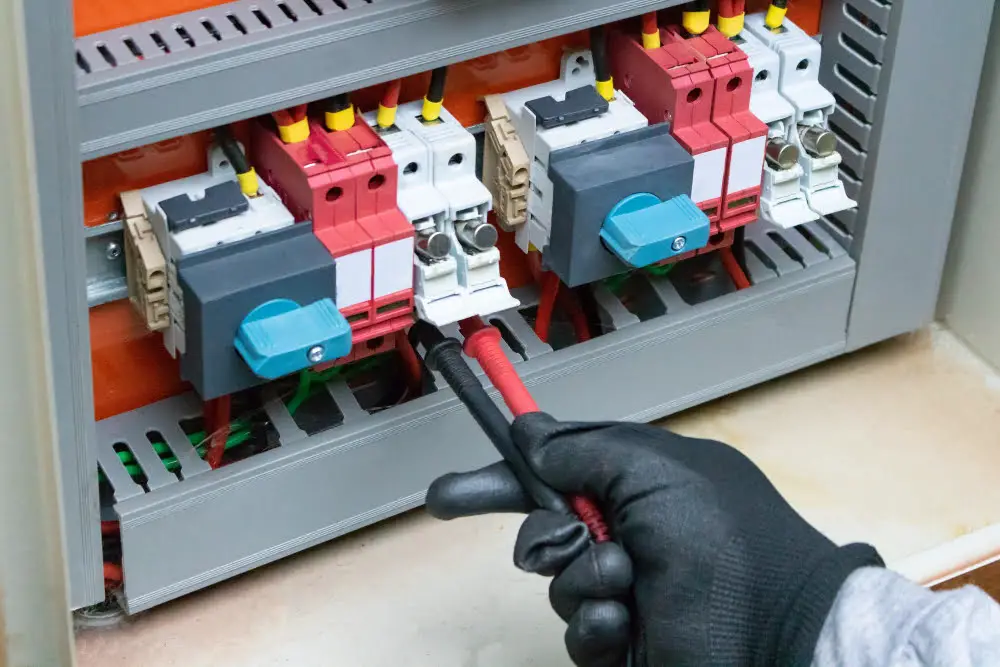
Halting all power feeding into the site is crucial before handling an electrical panel. Use a multimetre to confirm that no latent electricity remains in any circuit or panel wires.
Always wear insulated gloves and tech goggles to prevent any accidental contact with electrical circuits. To discourage electric shock, always use one hand when touching any electrical parts.
Lasty, it is crucial to keep the work area well-lit to safe-guard visibility and limit any chance of accidental contact with energized parts. This procedure is often overlooked but notably imperative to your safety.
Understanding the electricity movement within metallic buildings also helps in precautionary measures, key among being the avoidance of electromagnetic fields that could cause severe electrical harm or damage to devices.
Step-by-Step Guide On Mounting Electrical Panel
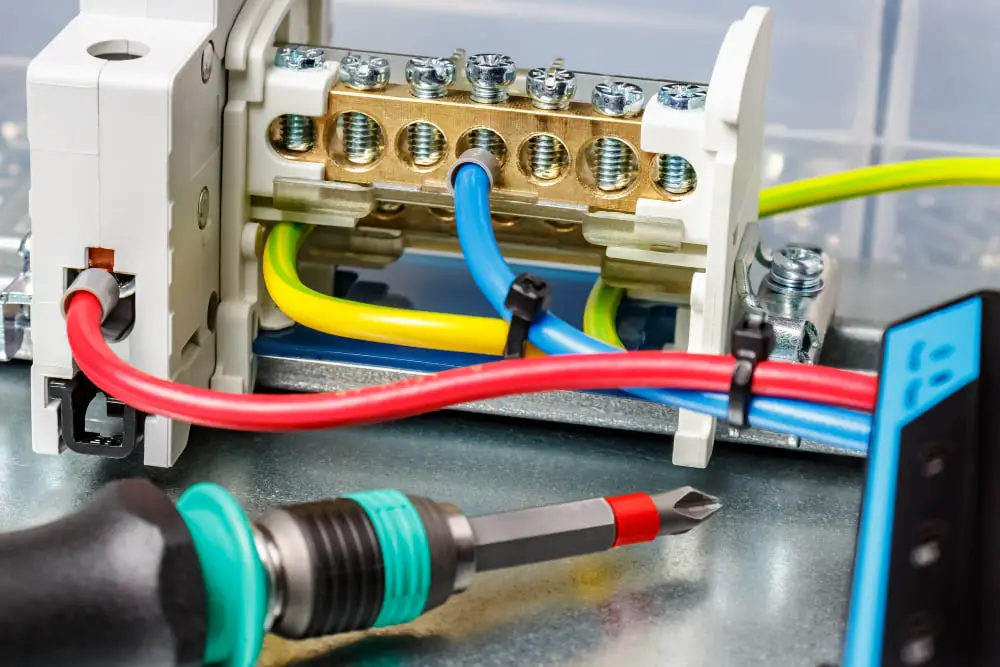
To successfully mount an electrical panel in a metal building, take the following steps:
1. First, identify the ideal location for your electrical panel. It should be easily accessible and safe from potential harm. Walls near utility spaces are often an excellent choice.
2. Once the location is decided, mark it accurately. This is crucial as positioning mistakes can result in a complicated re-installation process. Also, measure the distance between the mounting holes on the panel to ensure correct alignment when installing.
3. Make sure to securely attach the electrical panel to the metal building using suitable fixtures and fittings. Drill holes into the marked spots and use fastening screws to secure its position firmly.
4. Post-installation, connect the individual circuits to the main panel board. Always remember to connect the grounding wire to avoid electrical mishaps and ensure safety.
5. With the circuits connected and the panel set up, it’s time to close the panel’s door and turn on the main breaker.
Avoid rushing this process as it should be carried out systematically, and each step holds importance in guaranteeing an efficient and safe electrical setup. The key is precision and adherence to safety standards.
Importance of Correct Positioning of Electrical Panel in Metal Buildings
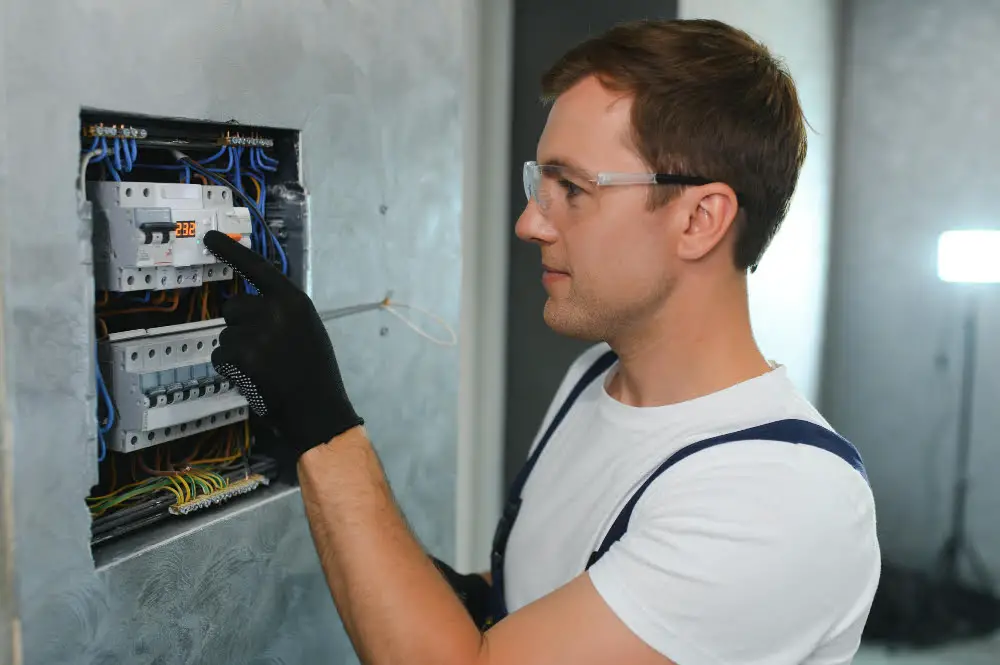
Positioning an electrical panel correctly in your metal building should never be an afterthought. This task is integral for multiple reasons:
1. Safety: Proper panel placement is necessary to avoid accidental contact or exposure. Out-of-reach locations help reduce the risk of electrical shock.
2. Accessibility: It should be convenient for maintenance and troubleshooting activities. Accessibility reduces time spent on potential repair jobs and enhances overall safety.
3. Code Compliance: Leveraging applicable building codes fosters safer installations. These codes often dictate minimum height and clearance distances, ensuring adequate space for operation and ventilation.
4. Ventilation: Power panels generate heat during operation, so placement must permit ventilation to maintain cool operational temperatures. Hot spots can lead to early failure of electrical components.
5. Future Expansion: Considering potential future upgrades or expansion needs, it’s wise to provide extra space around your electrical panel.
6. Weather Protection: In metal buildings, it’s important to protect the panel from potential damage, like leaks or condensation that could cause significant damage over time.
Remember: positioning isn’t simply about picking a spot. It’s a calculated decision, aiming to ensure safety, compliance and an optimized environment for the electrical panel’s functioning and longevity.
Maintaining and Testing Metal Building Electrical Panel
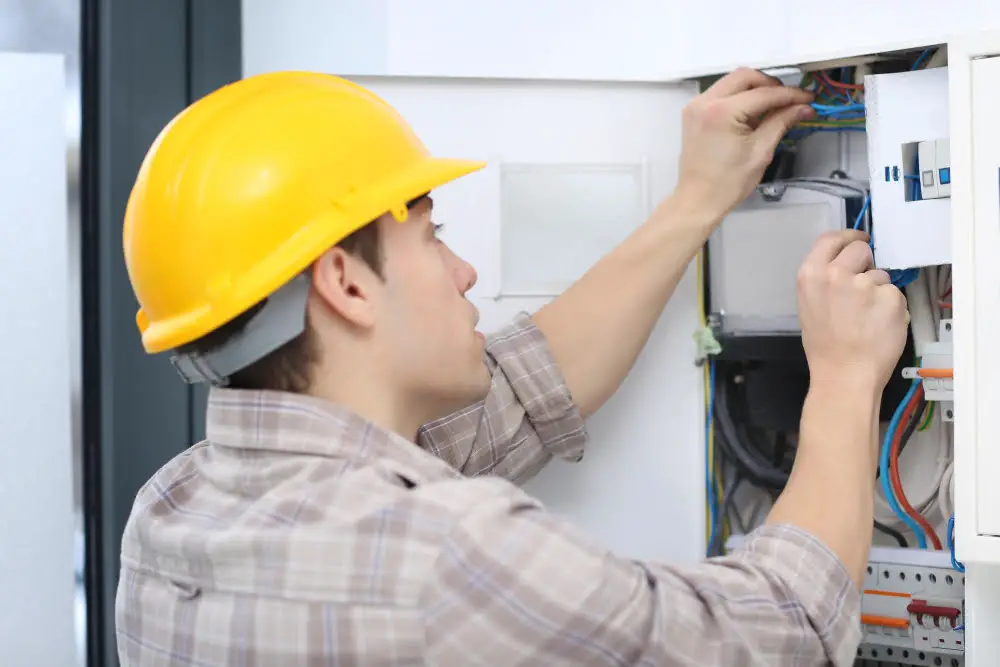
To ensure the long-term functionality of your electrical panel, regular maintenance and testing are paramount. This process involves a few crucial steps:
1. Panel Cleaning: Dust and debris can accumulate over time and could potentially cause issues. A clean, dust-free panel can help prevent overheating and electrical shorts.
2. Regular Inspection: Check frequently for signs of wear and tear. This could include frayed wiring or loose connections, which could present safety hazards.
3. Circuit Breaker Testing: Utilize an ohmmeter or a specific circuit breaker finder to verify each breaker’s operational status. Immediate actions have to be taken if any inconsistencies are found.
4. Professional Checks: Occasionally, having a professional electrician inspect the panel can uncover issues that might not be noticeable to the untrained eye.
Adopting these practices can ensure your panel operates efficiently and safely in your metal building, preventing future electrical problems.
Potential Mistakes to Avoid When Installing Electrical Panel in Metal Building
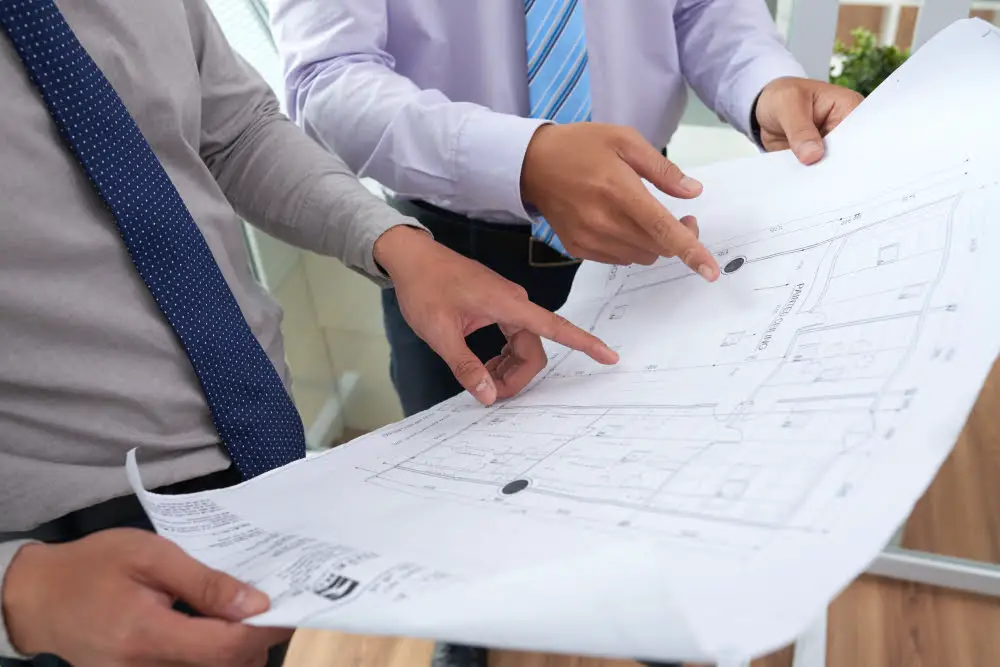
Paying attention to common errors during installation can save valuable time, expenses, and prevent potential hazards.
1. Ignoring Local Building Codes and Regulations: It’s not only essential but also legally required to adhere to the local electrical and building codes during installation.
2. Inadequate Clearance: For easy access and optimal operation, maintain a clearance of at least 36 inches in front of the panel.
3. Improper Grounding: Faulty grounding can lead to numerous electrical issues like electrical shocks, equipment failure, and even fires. Always ensure that your panels are grounded correctly.
4. Overlooking Circuit Load Calculations: Overloading a panel can lead to overheating or fire. Always calculate the circuit load correctly to decide the right electrical panel size.
5. Incorrect Wiring: This is often a cause of numerous electrical failures. For instance, the incorrect placement of hot and neutral wires can lead to circuit malfunction.
Remember, it’s far safer and more effective to engage a qualified electrician or electrical engineer if you’re unsure about any segment of the process. Knowledge is power but only when applied correctly.
Understanding the Electrical Code and Regulations for Metal Buildings

Navigating through the seemingly complex world of electrical codes and regulations is crucial. Basic knowledge helps you ensure that your installation aligns with safety standards, preventing potential hazards. Here’s a simplified explanation of some key points:
1. NFPA 70: Known as the National Electrical Code, this document provides guidelines for safe electrical wiring in buildings. Regular updates reflect evolving knowledge and technology.
2. Zoning Laws: Specific laws may apply depending on your building’s location, addressing elements like distance from flammable materials or accessibility to the panel.
3. Ampacity Selection: This refers to the electrical panel’s current-carrying capacity. Overloading is a primary cause of electrical fires, so selecting the right ampacity is vital.
4. Grounding: Especially important in metal buildings, grounding helps reduce the risk of electrical shocks. The ground wire must connect the electrical panel to the building and the earth.
When in doubt, consulting with a licensed electrician or local code enforcement officer can help you understand these regulations in greater detail.
FAQ
Can you mount a breaker box to a metal building?
Yes, you can mount a breaker box to a metal building, provided the metals are not dissimilar to prevent current flowing to the ground through the building; in such cases, using an insulator between the box and the frame along with stainless screws would be advisable.
How do you ground a subpanel in a metal building?
To ground a subpanel in a metal building, pull a 4-wire feeder (two hots, one neutral, one ground), isolate the neutral conductor and bar, and bond the enclosure to the grounding bar and conductor, ensuring no need for an additional grounding rod as the building is likely grounded to the existing panel.
How do you attach things to a metal building?
Attaching items to a metal building typically involves using galvanized nuts, bolts, and washers, with the length and diameter of the bolt selected based on the item being hung, after spots on the wall have been measured and marked.
Should a metal building be grounded?
Yes, each metal building should be independently grounded and all its components electrically bonded together.
What precautions should you take while installing a breaker box in a metal building?
Ensure the breaker box in a metal building is properly grounded to prevent electrical shocks, and securely attached to a non-combustible surface, away from flammable materials.
What kind of conduit is appropriate for electrical installations in metal buildings?
The appropriate conduit for electrical installations in metal buildings is typically rigid metal conduit (RMC) or electrical metallic tubing (EMT).
How can erosion affect the grounding of a metal building over time?
Erosion can undermine the grounding of a metal building over time by washing away soil, potentially destabilizing the foundation, and disrupting electrical connections.
Recap




